Nail psoriasis is a type of this disease, which mainly affects the skin. Like other types of pathology, this form has a chronic, non-infectious recurring process. The main signs of damage to the nail plate caused by psoriasis are changes in its shape, loss of luster, the appearance of spots on the plate, and complete nail peeling.
With this shape, the skin around the board will also be damaged. Untimely, incorrect treatment can cause complications, such as severe deformities and complete loss of nails on hands and feet.
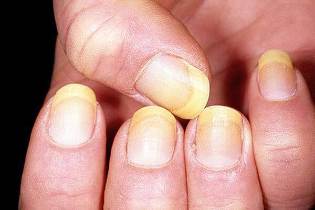
The treatment of fingernail psoriasis is similar to other types of treatment, but it also has its own characteristics. In this article, we will consider the symptoms of toenails and nails, their causes, and how to treat psoriasis.
Under the influence of various reasons, psoriasis nails may be damaged. This form is usually found in the context of pathological forms such as psoriatic arthritis.
In medical practice, this type is called nail psoriasis or psoriasis. It is rare, but it often brings complications and many undesirable symptoms.
The following factors can be attributed to the main cause of pathology:
- Frequent stress and emotional stress;
- The body's metabolism process is not correct;
- Chronic infectious diseases;
- Poor blood circulation;
- Damaged nails and exposed to certain chemicals;
- Genetic susceptibility.
Important! In some patients, nail psoriasis occurs against the background of damage to the nail plate due to bacterial infection. It is difficult to diagnose the disease in this situation; an experienced expert should recognize the disease.
Varieties
Psoriasis under the nails may appear in patients of all ages, but in most cases it will occur in patients over 35-40 years old. There are several forms of this disease. These include:
Thimble syndrome
This species is characterized by plate-like lesions in the form of punctate depressions. In most cases, they are located in a specific area of the nail, but in some cases the groove extends to the entire nail. Externally, the plate resembles a thimble, which is why this type is often called a "thimble".
Amelia
This form has symptoms such as cloudy nails and disappearance of color. This occurs due to the lack of healthy blood microcirculation. As the disease progresses, the plate deforms and disappears. Only a small part of the board remains at the bottom.
Onset of bleeding
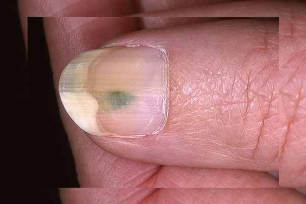
means red or pink spots are formed under the nail. These symptoms occur at the beginning of pathology. In addition, there may be signs such as bruising under the board. The nail also has a layer of seal, which has a strong sense of layering.
How to distinguish nail psoriasis from fungus?
Generally, patients are interested in how to distinguish nail fungus from psoriasis. This issue is quite complex and requires expert consultation. Laboratory testing is also required. Methods such as dermal biopsy and histological studies can help eliminate fungi.
Differential diagnosis can be used to rule out diseases that also affect nails. These include the following diseases:
- Lichen planus;
- Various forms of skin diseases;
- Eczema.
The main indicator of psoriasis is that there is no abnormality in blood components. In most cases, increased levels of white blood cells and red blood cell sedimentation reactions indicate the presence of infectious pathological forms.
Important! The difference between nail fungus and psoriasis can only be detected by laboratory tests. From the outside, the pathology may be almost the same.
The main manifestations of this disease
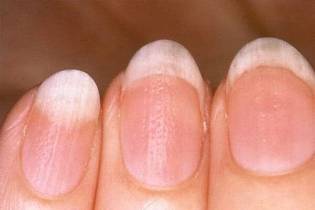
Nail psoriasis and toe nail psoriasis have many very unpleasant symptoms. Below, you can see photos showing psoriasis on the feet and nails. Therefore, let us consider the manifestations of the disease according to the form of the disease.
The thimble type of psoriasis has the following symptoms:
- Groove appearance, dotted depression;
- The plate is muddy;
- The board is bent and hooked on the outside;
- When you press it, you feel pain.
A solution:
- Change the color of the board;
- The nail is deformed and its integrity is violated;
- Remove the board from your fingers.
Bleeding:
- The appearance of red, brown and violet spots under the nails;
- Plate deformation, muddy;
- Capillary damage;
- There may be purulent discharge when pressed.
Symptoms may vary slightly, depending on the severity of the disease and the individual patient.
How to treat nail psoriasis
Today, how to treat nail psoriasis is very important? In modern medical practice, there are many ways to treat this disease. The main ones include:
- Use external products.
- Oral medication.
- Use light therapy and other physical therapies.
- Use traditional medicine.
Next, we recommend considering each method in more detail.
Treat nail psoriasis with ointments and ointments
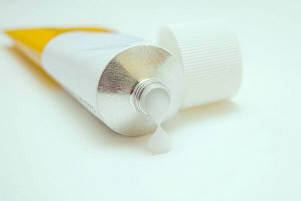
Nail psoriasis and its early medical treatment involve the use of topical drugs.
The ointment can be hormonal or non-hormonal. When non-hormonal drugs are ineffective, the first is used for serious diseases.
Hand, foot and nail psoriasis ointment can also be non-hormonal. These drugs include zinc, salicylic acid, etc.
Non-hormonal drugs have the least side effects and are not addictive, but their effects must wait a long time. Hormonal drugs work quickly, but they can cause many complications.
Oral medication
Disease treatment should be comprehensive. You can also use the following remedies to eliminate symptoms and restore nails:
- tranquilizers.
- Immunomodulator. Drugs help to strengthen the person's natural defenses.
- Anti-allergic drugs.
Physical Therapy

Recently, the use of physical therapy methods has proved itself very much. Ultraviolet therapy, cryotherapy, azone therapy, excimer laser therapy and other methods have achieved excellent results. The following types of physical therapy are the most commonly used in medical practice:
- Ultraviolet radiation;
- PUVA treatment;
- X-ray treatment;
- Use ultrasound;
- Laser treatment.
Important! The duration and number of meetings should be decided by experienced experts. It is strictly forbidden to use these methods for self-medication, because it often causes many side effects.
The role of traditional medicine
Folk remedies for nail psoriasis have long been used as a mature treatment. Therefore, how to treat nail psoriasis at home, we will find below. There are many recipes to help you deal with pathological symptoms. The most popular drugs include:
Celandine Soup
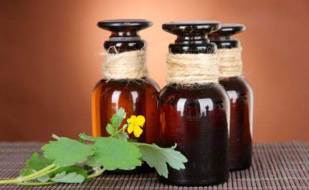
For 500ml of water, 2 tablespoons. l. Herbal medicine. Boil the reagent on low heat and cook for 30-40 minutes. The broth is used for bathing. Dissolve it in water at a ratio of 1: 2 and soak your nails in it for 20-25 minutes.
Use natural oil to treat psoriasis on nails
Sea buckthorn oil can eliminate inflammation very well. It can soften the affected area and enrich the nails with useful vitamins and minerals. To do this, use a cotton pad to apply oil to the board and let it sit for 30-40 minutes. Repeat this process 2-3 times a day.
Attention! If you decide to treat nail psoriasis by yourself, please consult your doctor first, self-medication will harm your health!
Use bow
Fresh onions are passed through a meat grinder, and the gruel made is spread on the nails of the affected area. I covered it with a gauze bandage and let it sit for 30 minutes. The treatment process will continue until healthy nails grow. Nail psoriasis is called a serious chronic disease. It is very important to diagnose the disease in time and start the necessary treatment. This will help keep your feet and hands healthy and avoid many unpleasant complications.























